To end this short series, a few pictures of Monocots.
1 Aloe striata
2 A. ferox
3,4 Boophone disticha
Just for a change: just pictures and names. Hopefully a measure of inspiration will compensate for the lack of information.
Let’s start with some Crassula’s.
1 C. arborescens ssp. arborescens
2,3 C. barbata ssp. barbata
4 C. mesembryanthoides ssp. mesembryanthoides
5 C. nudicaulis v. platyphylla
6 C. perfoliata var. minor
7,8 C. perforata
If you are after sheer visual beauty, this species will not be high on your list. Nevertheless it is of great interest, because no other Haworthia looks quite like it. With their long narrow leaves (sometimes over 30 cm long) the plants could often easily be taken for clumps of grass.
They are found from the Calitzdorp area westward to Anysberg, usually on shaded -and therefore relatively cool and damp- southern slopes. In more open, drier and hotter spots, the plants stay much smaller, as you can see in the first three pictures.
It is often not easy to identify Glottiphyllum species, but this one is an exception. The very unequal pairs of leaves with their white margins make it very distinctive.
It also differs from most other members of the genus by not occurring in the Little Karoo, but in the Prince Albert-Willowmore area.
When the Swiss botanist Augustin de Candolle described this species in 1838, he apparently saw a likeness to a Cotyledon. But when I ran through the mental pictures of Cotyledons that I know, I wondered what resemblance he could have had in mind. So, some detective work was called for.
Did de Candolle compare his new species to a plant that at that moment was incorporated in Cotyledon, but now belongs in another genus? That is certainly a possibility, as no less than 471 plant names have been associated with the genus at some stage.
On the other hand, looking through “Cotyledon and Tylecodon” by Van Jaarsveld and Koutnik, it struck me that some narrow-leaved forms of C. orbiculata could well have been the inspiration for de Candolle’s name. Let’s not forget that he probably knew many plants from descriptions or at best from black and white drawings, rather than from live material. In the book I just mentioned, there are a few reproduction of old illustrations. One dates back to 1701 and represents Cotyledon africana frutescens, folio longo & angusto…. ( the shrubby Cotyledon from Africa, with long, narrow leaves), which is now known as C. orbiculata var. spuria. This picture may well have spurred (pun intended) the author to use his epithet.
Well, enough of historical speculation, let’s move to present-day reality.
S. cotyledonis is a shrub of up to 1 m tall, with thickish stems and succulent triangular to almost round leaves up to 5 cm long and about 3 mm wide. The leaves give off an unpleasant smell when damaged, which is why it is called stinkbos in Afrikaans.
The plants flower in spring. They are widespread from Namibia to the eastern part of the Little Karoo. Usually they are found on dry stony slopes, but sometimes they are abundant in clayey soils.
To be continued.
Polytomus means something like much divided and refers to the fact that the plants are much more branched than in otherwise similar species like S. scottii and S. odora.
In nature the plants form compact shrubs up to about a meter tall; in cultivation they may reach 3 m.
They are locally common in the Sanaag region of northern Somaliland in dry bush land on stony plains and slopes at altitudes between 1000 and 1900 m.
The flowers range in colour from white and yellow to pink, purple and magenta. They usually appear in October and November, but the accompanying pictures were made in late January.

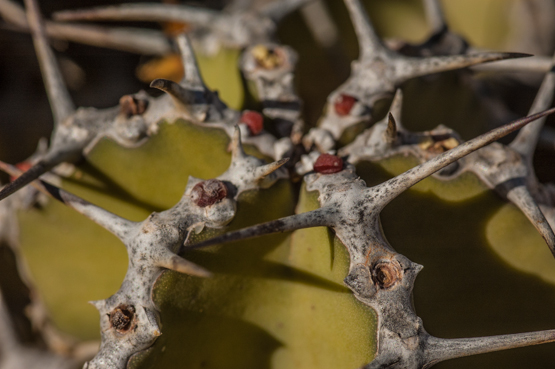
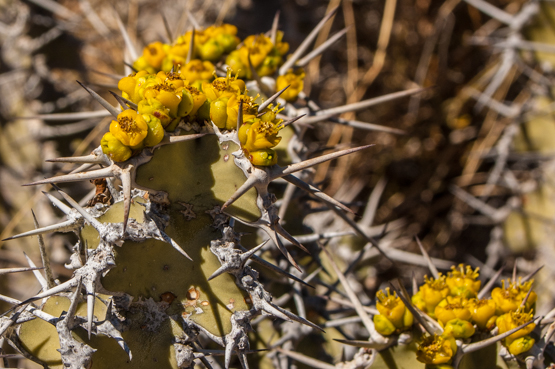
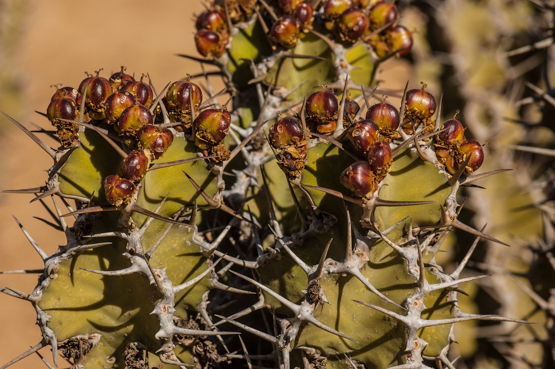
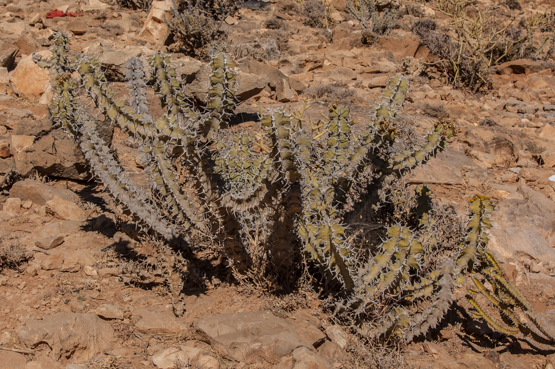
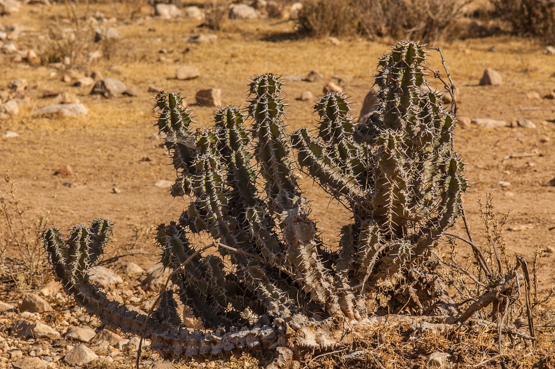

This little known species has a limited distribution on exposed south-facing limestone slopes and gravelly plains with sparse scrub in the Sanaag region of eastern Somaliland at an altitude of 1350-2000 m.
The plants form compact sturdy shrubs up to 1.5 m high; the branches have 4-6 angled segments 3-4 cm long and 4-7 cm wide, with a continuous horny margin and strong spines to 2.5 cm long.
To be continued.